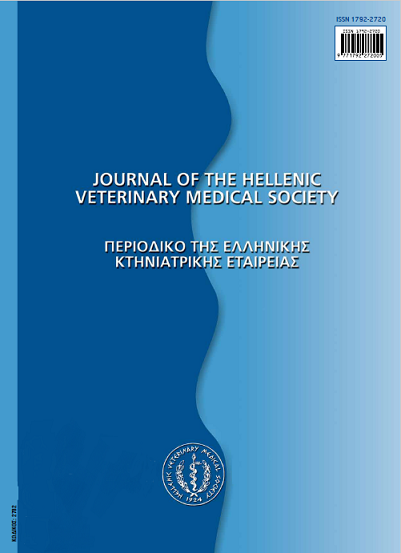Tracheal Collapse in the dog: step by step from pathophysiology to management

Abstract
Tracheal collapse (TC) is one of the most common causes of cough in small and toy breed dogs. Collapse typically occurs in a dorsoventral direction with prolapse of the flaccid dorsal tracheal membrane into the lumen. TC may affect just a part of the trachea or its entire length. Collapse of the cervical trachea occurs on inspiration, while thoracic part collapses on expiration. Tracheal collapse is a chronic multifactorial disease. It has been suggested that genetic, nutritional, neurologic and inflammatory factors contribute to its pathophysiology. Cartilage rings appear hypocellular, while the dorsal tracheal membrane becomes thicker. The disease is most commonly recognized in middle-aged small and toy breed dogs. No sex predilection has been established.
Dogs can be obese or not. Tracheal collapse has been rarely reported in large breed dogs, cats, horses and goats. Tracheomalaciarepresents the analogous disease in humans. In 81% of cases the presenting complaint is a dry, high pitched, goose honking, paroxysmal cough that worsens over time (chronic form), which may be accompanied by exercise intolerance and cyanosis. Various factors could exacerbate clinical signs, such as barking, excitement, drinking or eating. Few cases are presented with the acute form of the disease. Concurrent diseases may worsen or exacerbate clinical signs. The most common finding upon physical examination is the goose honking dry cough that is elucidated on tracheal palpation; flattened and collapsible tracheal rings may be also detected. A concurrent disorder may contribute to physical examination findings. Plain lateral radiographs of the neck and thorax contribute to the diagnostic evaluation of TC in dogs. Their sensitivity varies from 42,8% to 82%. Tangenital radiographs of the neck, as well as tracheal fluoroscopy and ultrasound, may be helpful in the diagnosis of TC. The gold standard method for the diagnosis and staging of TC is tracheoscopy. According to an established grading system it is divided into four stages, which are characterized by the degree of reduction (25%, 50%, 75% and 90%) of the dorsoventral diameter of the tracheal lumen. The major advantage of tracheoscopy is that it can also evaluate the morphology and function of other organs of the respiratory system and it can contribute to the diagnosis of a concurrent disease. Tidal breathing Flow - Volume loop acquisition is a recently standardized diagnostic method that seems to be a quick and reliable diagnostic tool for the diagnosis and staging of TC in dogs. One of its major advantages is that it is performed in alert and untrained dogs. Dogs that are presented with the acute form of the disease must be handled with caution and clinical evaluation should be postponed until their stabilization. Dogs with TC may respond to medical management, surgical correction or to the use of intraluminal stents. Physical examination findings, history and the general condition of the dog will all contribute to the decision of the appropriate therapeutic modality.
Article Details
- How to Cite
-
PARDALI (Δ. ΠΑΡΔΑΛΗ) D., & ADAMAMA-MORAITOU (Α.Κ. ΑΔΑΜΑΜΑ-ΜΩΡΑΪΤΟΥ) A. K. (2017). Tracheal Collapse in the dog: step by step from pathophysiology to management. Journal of the Hellenic Veterinary Medical Society, 61(3), 253–266. https://doi.org/10.12681/jhvms.14893
- Issue
- Vol. 61 No. 3 (2010)
- Section
- Review Articles
Authors who publish with this journal agree to the following terms:
· Authors retain copyright and grant the journal right of first publication with the work simultaneously licensed under a Creative Commons Attribution Non-Commercial License that allows others to share the work with an acknowledgement of the work's authorship and initial publication in this journal.
· Authors are able to enter into separate, additional contractual arrangements for the non-exclusive distribution of the journal's published version of the work (e.g. post it to an institutional repository or publish it in a book), with an acknowledgement of its initial publication in this journal.
· Authors are permitted and encouraged to post their work online (preferably in institutional repositories or on their website) prior to and during the submission process, as it can lead to productive exchanges, as well as earlier and greater citation of published work.




